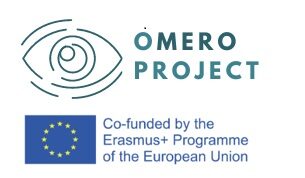The oMERO project partners are the following:
| Partner name | Nation | Website |
|---|---|---|
| Fondazione David Chiossone (APPLICANT) | Italy | www.chiossone.it |
| Università degli Studi Di Genova | Italy | www.unige.it |
| Mutualité Française Paca Ssam | France | www.lamut.fr |
| Lietuvos Sveikatos Mokslu Universitetas | Lithuania | www.lsmuni.lt |
| Si4life – Scienza E Impresa Insieme Per Migliorare La Qualita’ Della Vita Scrl | Italy | www.si4life.it |
| The Provost, Fellows, Foundation Scholars & The Other Members Of Board Of The College Of The Holy & Undivided Trinity Of Queen Elizabeth Near Dublin | Ireland | www.tcd.ie |
| Umea Universitet | Sweden | www.umu.se |
| Université Côte D’Azur | France | univ-cotedazur.fr |
| University of Gothenburg | Sweden | www.gu.se/en |
Partners info
Fondazione David Chiossone per i ciechi e gli ipovedenti (APPLICANT)

The David Chiossone Foundation (www.chiossone.it) is a centre of excellence in Italy for rehabilitation and education of low vision and visual disability from 1868, serving both youngsters and adults with different sight pathologies and multihandicapped. Last years the Institute has followed about 500 users out of which 52% are overage. It has about 160 employees.
The goal is to assist the blind and low sighted patients whether it is from the sensory or personal point of view supporting social and scholastic integration. The Institute is a no profit organisation of social help that operates with its own structure and staff in the activities, but its services are offered to the user thanks the agreement with the National Health Service. The Institute has a Scientific Board and operates in the field of Research & Development in partnership with national and international leader organizations (University of Genoa, National Research Centre, Pediatric Hospital G. Gaslini). The Institute is equipped with main assistant technologies for rehabilitation of blind and visually impaired people. During the last years it participated in research and education projects towards the social integration of the blinds and visually impaired people by means of new technologies, with special attention to accessibility of websites and internet browsing (projects Occhio al sito, HEI Solig). For 15 years the institute has been the centre of coordination of the executive projects of the Law 284/97(Prevention of the blindness and for the visual rehabilitation and the social and working integration of the multihandicapped blinds), coordinating research for the prevention of blindness by screening of newborns and infants and organizing initiatives for the prevention of the macular degeneration in elderly in the Liguria region.
Università Degli Studi Di Genova

DIBRIS – Prof. Silvio Sabatini
DINOGMI – Clinica oculistica Prof. Carlo Traverso
The University of Genova (UNIGE) is one of the most ancient of the European large universities (established 1471); with about 280 educational paths distributed in the headquarters in Genova and the learning centres of Imperia, Savona and La Spezia, it comes up to the community as a well-established reality throughout the region.
The University of Genova participates in the project with two departments, DINOGMI and DIBRIS.
DINOGMI participates with Clinica Oculistica and the laboratories “glaucoma and neuro-ophthalmology” and “pediatric ophthalmology and eye movements”. They are involved in all the project activities and will organize the future VDR training course.
Key persons involved are Professor Carlo E. Traverso, Professor Michele Iester, Professor Massimo Nicolo, Dr Aldo Vagge, Dr Carlo A. Cutolo.
Within DIBRIS, is the Bioengineering Laboratory to offers engineering design services, measurements, and experimental tests in various sectors of ICT. They are responsible for the design and assessment of the IO5: Virtual reality simulator for learning by experiencing visual disabilities.
The key person is Silvio P. Sabatini, associate professor in Bioengineering.
Mutualité Française Paca Ssam
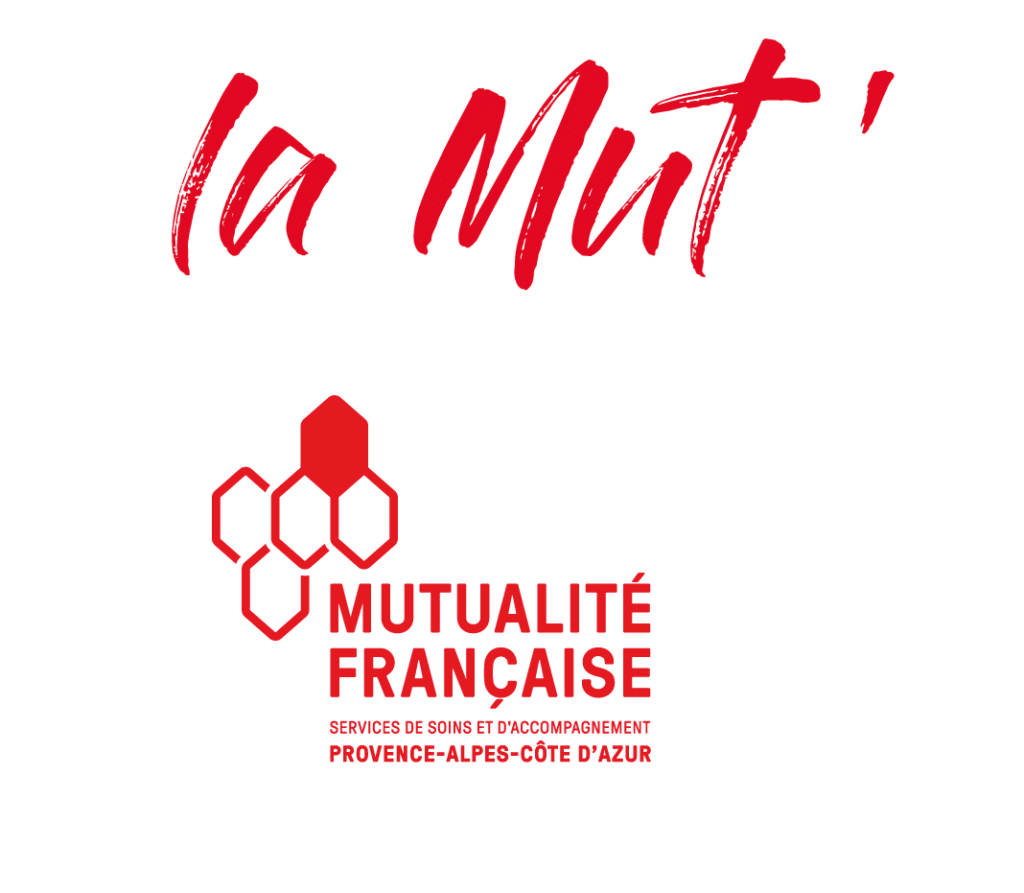
The Mutualité Française PACA SSAM, also known as La Mut’, operates in a specific territory in the South-East of France, serving the population at all stages of life and/or accidents, from birth to the end of life. It provides a continuity of service based on mutualist values: solidarity, responsibility, democracy and independence.
Among its missions, La Mut’ creates, manages and/or participates in the management of services or establishments in three areas in particular :
1. Medical services and goods, with the management of dental health centers, optical stores, hearing aid centers, as well as the creation and coordination of multi-professional health centers (MSP) in collaboration with independent health professionals.
2. Early childhood, with the management of 24 childcare facilities, 23 of which are under public service management concessions.
3. Services for the autonomy of people, in particular:
– A tele-assistance service for the elderly and disabled;
– A home help service (ADORAM);
– A Social Emergency Assistance (SAMU Social);
– Three SSIAD (home nursing services);
– Three medico-social support services for visually impaired adults;
– A residential facility for dependent elderly people within the Claude Pompidou Institute;
– Two Mobile Visual Health Teams for the screening of sight-related diseases and visual assessment of users in rural areas.
La Mut’ is a player in the Social and Solidarity Economy and is represented in front of local authorities and government services for these activities. The territory covered by the Territorial Union is the Provence-Alpes-Côte-d’Azur region. The Mut’ has built up a partnership relationship with the local authorities where it is a benchmark in terms of the social solutions proposed in consultation.
Lietuvos Sveikatos Mokslu Universitetas

Lithuanian University of Health Sciences (LSMU) is one of the best and largest institution of higher education for biomedical sciences in Lithuania with 100 years of academic experience and great potential for development. Medical teaching and research are mainly based on cooperation with the largest health care institution in the Baltic States – the Hospital of LSMU “Kauno klinikos”. The Veterinary Academy is the only establishment in Lithuania to train veterinarians. A number of other health related programmes (Pharmacy, Food Sciences, Public Health, Nursing, etc.) are offered to students here, within the modern and innovative environment. At present, the University offers 24 study programmes and has more than 8,000 students. 777 are full-time foreign students from 42 countries.
There are 7 faculties and 5 research institutes at the University. In 2018, there were 7947 students, among them 1033 foreigners and 2 PhD students. The University offers 125 study programmes. Teaching staff of LSMU consists of 203 professors, 227 associate professors, 358 lecturers, and 440 assistant professors. LSMU participates in development of projects that result in improved quality of studies, new technologies, augmented scientific research and development as well as renewed and modernized infrastructure of the University. LSMU collaborates with more than 140 European, American, and Asian universities for study and research purposes. The Lithuanian University of Health Sciences is also a member of the World Health Organization, where it fulfils the role of a collaboration centre for research and training in epidemiology as well as for prevention of cardiovascular and other chronic non-communicable diseases.
Si4life – Scienza e Impresa Insieme per Migliorare la Qualita’ della Vita Scrl
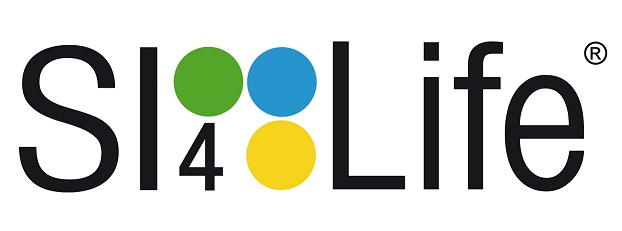
The SI4Life consortium, “Science and enterprise together to improve quality of life” is a no-profit SME established in 2010 by 14 members with sharable background, knowhow and projects in life sciences and the assistance and rehabilitation of the disabled.
The primary aim of the Consortium is to carry out and support basic research and to transfer advanced solutions able to improve the quality of life in the assistance, rehabilitation, and social/cultural integration of people with sensory, neuro-motor, cognitive and/or mental disabilities. The main interest operational areas of SI4life scrl include:
-Construction of synergies between different actors involved in research, innovation, training, production and use of tools, technologies, aids for the elderly and/or disabled;
-Creation of the best conditions to favour the qualification of human resources through continuous training and development of expertise in science and technology, such as strategic factors of success and competitive advantage;
-Activation and strengthening of structures, equipment for new and existing research;
-Support for the deployment and the development of innovative projects shared between the research system and enterprises.
SI4Life has been the coordinator of the Technological Innovation Hub in Italy, financed by Liguria Region, focused on the quality of life of elderly and disabled people. In 2017, with the other two regional hubs of the health context, it merged in the actual Liguria Hub on life science (PLSV).
Presently SI4Life is dealing with several regional, national and European projects concerning science, health and the quality of life, aiming to create systematic synergies and technological transfer between Companies, Research Institutions and Health Facilities, and in particular:
-to steer technological research in the development of innovative devices able to compensate for the sensory, motor and cognitive disabilities, help rehabilitation and promote recuperation;
-to validate the applicability and define the cost/benefit ratio of devices/protocols for assistance and rehabilitation;
-to define actions and training strategies to overcome the existing mismatch between the needs of older adults and disable people and the skills currently offered by the professions that affect their quality of life (e.g. home care assistance, gastrology and inclusive tourism).
What are the activities and experience of the organisation in the areas relevant for this project? What are the skills and/or expertise of key persons involved in this project? Please explain how the organisation brings an essential added value to the project.
SI4Life includes SMEs developing ICTs for health monitoring and rehabilitation, health service providers and representatives of end-users. Research Institutes (University of Genova and National Council of Research) feed its scientific committee. SI4Life is one of the oldest members of the EIP on AHA coordinating a Commitment with Liguria Region since 2010 and has a big experience in the definition and management of project proposal at EU, national and regional level (especially in the Erasmus Plus Programme and SSA) and the field of Instructional Design and e-Learning.
The Provost, Fellows, Foundation Scholars & The Other Members Of Board Of The College Of The Holy & Undivided Trinity Of Queen Elizabeth Near Dublin
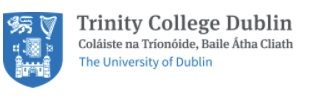
Trinity College (TCD), the University of Dublin, is the Ireland’s highest ranked University; here a diverse, interdisciplinary, inclusive environment which nurtures ground-breaking research, innovation and creativity are promoted through engaging with issues of global significance. TCD is a globally connected community of learning, research, and scholarship, inspiring generations to meet the challenges oft he future through the working together more intensely. It is home to 17000 undergraduate and postgraduate students across all the major disciplines in the arts and humanities, and in business, law, engineering, science, and health sciences. The Trinity College of Dublin offers 3 faculties (Arts, Humanities and Social Sciences; Engineering, Mathematics and Science; Health Sciences) and 124 study programmes to undergraduated, postgraduated, evening and online students. In TCD research happens at different scales: all of the research calls for individuals who are talented, but many research questions cannot be tackled at the individual level alone so people, in TCD, also work together to uncover new knowledge and make breakthroughs and there are many different structures in Trinity that can help people to do this. Trininty Research Centres allow groups of researchers with different perspectives to come together to tackle research questions from a multifaceted perspective and do this at a much larger scale, and act as flagships for major areas of research in the University. On the national level TCD engages with colleagues in all of the Higher Education Institutes in Ireland and hosts three Science Foundation Ireland Research Centres.
University of Gothenburg
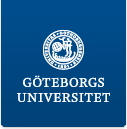
The University of Gothenburg (GU) is a multidisciplinary university that dates back to 1891. It consists of eight faculties and 38 departments. These disciplines serve as a meeting point for students, researchers and representatives from the commercial, industrial, and public sectors. Around 49 000 students and 6 000 staff study and work at the university, making it one of the largest universities in Northern Europe. The vision, stretch from 2021 to 2030, is entitled A university for the world and expresses the University’s ambition to be an international higher education and research institution that assumes responsibility for the development of society while helping to build a sustainable world.
The Faculty of Education has almost 8200 students and around 480 employees. It is directed at several areas, for example learning and teaching among children, adolescents and adults, leadership and pedagogy. The Faculty provides education directed at teacher training as well as for qualified teachers. Research at the Faculty addresses many critical issues within pressing societal areas. Such areas are for example the content of teaching and learning in schools, the implications of digital technology for learning processes, and the predictability of future academic success from assessment and grading.
The Department of Education and Special Education runs research projects and courses within education and special education. Issues related to the school system, school development or educational leadership and inclusive schools are examples of research. PRIS (Platform for Research in Inclusive education and School development) is a research platform exploring issues of inclusion and exclusion of children and adults in education and related areas of policy and practice. This implies interdisciplinary work and collaboration with researchers from different fields as well as collaboration with municipalities and local school practices. The department has also a collaboration with the University of South-Eastern Norway (USN) and run several courses within the field of vision rehabilitation.
Université Côte D’Azur

Université Côte d’Azur (CHE Nice) is a research-intensive university relying on a strong ecosystem of higher education and research institutions (Observatory of the Côte d’Azur, CNRS, INRIA, etc.), that:
− Welcomes over 30 000 students
− Employs over 4 000 persons involved in research in A or A+ ranked laboratories
− Relies on 493 active research and training partnerships
− Has a strong experience in the management of European projects (over a 100) and National projects
− Won 76 national and 48 international research prizes awards
− Counts on 113 active patents and 37 licenses
Over the past few years, CHE Nice has shifted its structure for a dynamic and flexible organisation in order to meet the needs of society and better prepare young scholars and professionals for a changing world. The actual CHE Nice model of university relies on transdisciplinary cooperation, an experimental model for coordination between research, training and innovation, as well as strong and sustained partnerships with private sector entities and local policy makers. To implement these collaborations and increase its flow of knowledge towards its ecosystem, CHE Nice knowledge actors, which form the backbone of the university, are closely interlinked through: 5 academies of excellence , 8 graduate schools, creating a continuum between training and research, 4 institutes of innovation and partnerships connecting the academic ecosystem with businesses and other external stakeholders.
Umea Universitet

The Umea University is the flagship institution of higher education in Northern Sweden; it was formally established in 1965 and now it enrol 34237 students; there are 4 faculties (Arts, Medicine, Social Sciences, Science and Technology) and 42 International programmes and in its campus there are 60 Nationalities.
In 1999 the Medical Faculty of Umea University was reorganised and the Division of Ophthalmology became a part of the Department of Clinical Sciences. Now it is an organisation for education and research in the fields of medicine, odontology and health care. The faculty comprises of 13 departments, 7 research centres, it has about 3400 active students and about 450 at the postgraduate level.
Since 2001 a new core curriculum has been in operation at the Medical Faculty of Umea University: after 4.5 years of studies at the faculty the course “Neurology, Ophthalmology, Otorhinoratyngology and community medicine” is given. Students learn different topics with integrated methods and their activities are encouraged. During each T10-semester up to 80 students are educated: they are divided into two parallel groups starting with different sections/topics; both groups study the ophthalmology part for about 4 weeks of full time studies. During this time they learn basic ophthalmology, methods of ophthalmological examinations and they have the possibility to treat ophthalmological patients under the supervision of the clinical assistants and/or associated/assistant professor.
